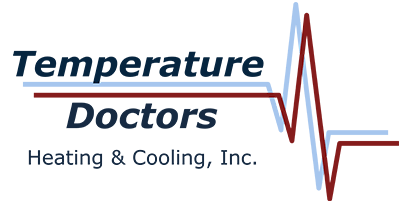
We spend lots of time in our homes. In reality, the Environmental Protection Agency (EPA) has determined being inside comprises 90% of our days. However, the EPA also has determined your indoor air can be three to five times worse than outside your home.
That’s since our residences are securely sealed to enhance energy efficiency. While this is fantastic for your utility costs, it’s not so good if you’re a part of the 40% of the population with respiratory allergies.
When outdoor ventilation is insufficient, pollutants including dust and volatile organic compounds (VOCs) can get captured. As a result, these pollutants could worsen your allergies.
You can boost your indoor air quality with crisp air and routine cleaning and vacuuming. But if you’re still having problems with symptoms while you’re at your residence, an air purifier might be able to provide relief.
While it can’t get rid of pollutants that have settled on your furnishings or carpet, it could help clean the air circulating around your house.
And air purification has also been scientifically verified to help lower some allergic symptoms, according to the American College of Allergy, Asthma and Immunology. It might also be helpful if you or a loved one has a lung condition, such as emphysema or COPD.
There are two models, a portable air purifier or a whole-home air purifier. We’ll examine the differences so you can learn what’s correct for your residence.
Whole-House Air Purifier vs. Portable Air Purifiers
A portable air purifier is for a single room. A whole-house air purifier accompanies your home comfort system to purify your full house. Some kinds can work on their own when your heating and cooling unit isn’t on.
What’s the Best Air Purifier for Allergies?
Look for a purifier with a High Efficiency Particulate Air (HEPA) filter. HEPA filters are placed in hospitals and offer the greatest filtration you can get, as they catch 99.97% of particles in the air.
HEPA filters are even more beneficial when combined with an ultraviolet (UV) germicidal light. This powerful combination can wipe out dust, dander, pollen and mold, all of which are general allergens. For the best in air purification, consider a system that also has a carbon-based filter to decrease household vapors.
Avoid using an air purifier that makes ozone, which is the top component in smog. The EPA cautions ozone may irritate respiratory issues, even when emitted at small concentrations.
The Allergy and Asthma Foundation of America has created a listing of questions to consider when purchasing an air purifier.
- What can this purifier remove from the air? What doesn’t it extract?
- What’s its clean air delivery rate? (A bigger figure means air will be purified more rapidly.)
- How often does the filter or UV bulb need to be switched]? Can I finish that on my own?
- How much do spare filters or bulbs cost?
How to Decrease Seasonal Allergy Symptoms
Want to get the {top|most excellent|best] outcome from your new air purification equipment? The Mayo Clinic recommends completing other measures to limit your exposure to seasonal allergy triggers.
- Stay indoors and keep windows and doors shut when pollen counts are heightened.
- Have someone else trim the lawn or pull weeds, since this work can trigger symptoms. If you are required to do these jobs on your own, you might want to consider using a pollen mask. You should also shower right away and put on new clothes once you’re done.
- Avoid stringing up laundry outside.
- Use the AC while at home or while you’re on the road. Consider adding a high efficiency air filter in your house’s home comfort equipment.
- Balance your home’s humidity levels with a whole-house dehumidifier.
- Hardwood, tile or linoleum are the suggested flooring kinds for decreasing indoor allergens. If your residence has carpet, add a HEPA filter on your vacuum cleaner.
Let Our Professionals Handle Your Indoor Air Quality Needs
Prepared to progress with adding a whole-house air purifier? Give our professionals a call at (815) 914-6197 or contact us online to request an appointment. We’ll help you find the right equipment for your residence and budget.
